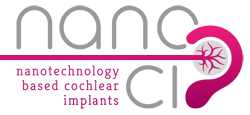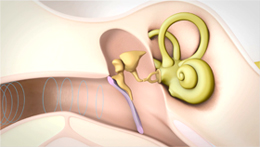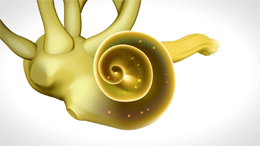Hearing loss & future cochlear implants
A note to patients
To lose your hearing, or have a friend or family suffering from hearing loss can be a very difficult situation. Many normal hearing individuals do not fully comprehend how difficult it is to live with hearing loss. Current cochlear implants are effective treatments to restore hearing in deaf patients, however are not suitable for all affected individuals and still have limitations for hearing in noise or for listening to music.If you or someone close is suffering from hearing loss or deafness and wishes further information on current treatment options, please refer to a physician specialised in the field of Ear Nose and Throat (ENT).
On hearing loss
Hearing loss is the leading birth defect in western societies with 2-3 affected children per 1,000 born. In addition, about 10% of adults aged 18 – 65 years and over 30% of people over 65 years of age are affected. Altogether, about 13% of the citizens in the EU, equalling a group of over 60 million individuals, suffer from hearing loss with its restrictions in quality of life and consequences for professional and private development. About 44 million individuals are significantly handicapped and require some sort of treatment. In the EU, severe hearing loss is rated as the 9th most severe disease. For mild to moderate forms, conventional hearing aids alleviate the communication problems.Cochlear implants
In severe forms of hearing loss and deafness, the auditory function can only be restored by a neuroprosthesis called cochlear implant (see the figure below), which functionally replaces lost inner ear sensory cells by directly stimulating the auditory nerve. By using a cochlear implant, formerly deaf subjects can converse without lip reading and deaf-born children can achieve functional hearing and learn to communicate with speech. According to numbers published by the US food and drug administration in December 2010, over 219,000 devices are already in use worldwide.
MED-EL-cochlear implant system with implant (A, left) and behind-the-ear speech processor (A, right, and B in use). The implant (A, left and C) consists of a stimulator/receiver unit with electrode array for stimulation of intracochlear auditory nerve fibres.


